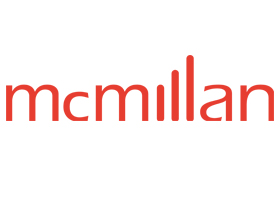


Ontario Employers be Aware: New Mandatory Screening Requirements for Ontario Workplaces
Ontario Employers be Aware: New Mandatory Screening Requirements for Ontario Workplaces
Mandatory COVID-19 screening requirements for Ontario workplaces came into effect on September 26, 2020. Employers should take immediate steps to implement the new screening procedures, as failing to do so can result in charges being laid by the Ministry of Labour under the Occupational Health & Safety Act (“OHSA”).
On September 26, 2020 the Ontario government amended Section 2 of O Reg 364/20 (Rules for Areas in Stage 3) to introduce a new requirement that:
The person responsible for a business or organization that is open shall operate the business or organization in compliance with the advice, recommendations and instructions issued by the Office of the Chief Medical Officer of Health on screening individuals.[1]
In conjunction with the above amendment, the Ontario Ministry of Health published COVID-19 Screening Tool for Workplaces (Businesses and Organizations) (the “Screening Tool”). Per the Screening Tool, Ontario workplaces[2] that are currently open must, at a minimum, screen “workers” and “essential visitors” daily for COVID-19 related symptoms using the “Required Screening Questions” listed in the Screening Tool. All of the Required Screening Questions must be answered in the negative before an individual can enter the workplace.
The Screening Tool applies to workers and essential visitors. The term “workers” includes students, contractors, or volunteers that conduct business or related activities in the workplace. The term “essential visitors” includes individuals providing a service in the establishment who are not employees or patrons of the establishment, such as delivery, maintenance, or contract workers.
The Screening Tool, however, does not apply to:
- Patrons of a workplace (e.g., customers entering a grocery store, restaurant, bar or other food or drink establishment);
- Emergency services or other first responders entering a workplace for emergency purposes; or
- Essential workers who travel outside of Canada for work.
Takeaway for Employers
There is currently no specific guidance from the Ministry of Health on exactly how to implement the Screening Tool, or how to collect and store the information obtained. However, as a general rule, all completed screening forms should be secured and kept confidential to ensure no personal health information is unnecessarily disclosed to any other parties. Designating a specific and limited number of persons to be responsible for conducting, securing, and storing completed forms can help to ensure confidentiality is maintained.
The Screening Tool provides that it can be adapted to suit any additional needs of specific workplace settings. As such, employers who have already implemented COVID-19 symptom screening protocols are encouraged to review their protocols to ensure they meet the minimum requirements set out in the Screening Tool. Employers who have not yet implemented a screening protocol are strongly encouraged to use the Screening Tool provided by the Ontario Ministry of Health.
Employers are also encouraged to regularly check the Government of Ontario’s advice, recommendations and instructions, including potential industry-specific requirements and adjust their current screening protocols, to ensure compliance as we enter the Fall and Winter seasons.
Takeaway for Construction Industry
Employers, Contractors, and Construction Managers who are the designated “Constructor” for a project under the OHSA should already have COVID-19 screening protocols in place. If not, we strongly encourage using the Screening Tool provided by the Ontario Ministry of Health.
Owners of a construction project who are not also the “Constructor” may not be required to implement the Screening Tool themselves directly, but all Owners are strongly encouraged to ensure that Contractors, Construction Managers, and any other designated “Constructors” on a project have COVID-19 screening protocols in place that meet the minimum requirements in this Screening Tool and related Regulations.
By Patrick M. R. Groom, Victor Kim and Maya Provad
[1] O Reg 364/20, s 2(3), under the Reopening Ontario (A Flexible Response to COVID-19) Act, 2020, SO 2020, c 17.
[2] The Screening Tool may not be applicable to health care settings, and some non-health care workplaces e.g. congregate living settings) where existing screening is already in place.
A Cautionary Note
The foregoing provides only an overview and does not constitute legal advice. Readers are cautioned against making any decisions based on this material alone. Rather, specific legal advice should be obtained.
© McMillan LLP 2020
Insights (5 Posts)View More
Ontario (Might get the) Right to Repair – An overview of Bill 187 the Right to Repair Consumer Electronic Products, Household Appliances, Wheelchairs, Motor Vehicles and Farming Heavy Equipment Act, 2024
Ontario considers new right to repair legislation for consumer products and motor vehicles.
More Than Meets the Eye: The Legal Implications of British Columbia’s Agreement to Recognize Aboriginal Title Over Haida Gwaii
An analysis of legal implications related to the BC Government's agreement with the Haida Nation to recognize Aboriginal title over Haida Gwaii.
Lessons Learned from the TTC’s Ransomware Attack
Lessons learned from the recent investigation by the Ontario IPC into the effectiveness of the TTC's cybersecurity measures and ransomware attack response
Don’t Get Caught by Canada’s Patent Novelty Grace-Period
The key difference between Canada and other jurisdictions like the United States when relying on the grace-period for inventor disclosures.
Shifting Gears – Canada to Consider New Motor Vehicle Equipment Regulations to Help Prevent Auto Theft
Transport Canada announces plan to update safety standards to combat auto theft.
Get updates delivered right to your inbox. You can unsubscribe at any time.






